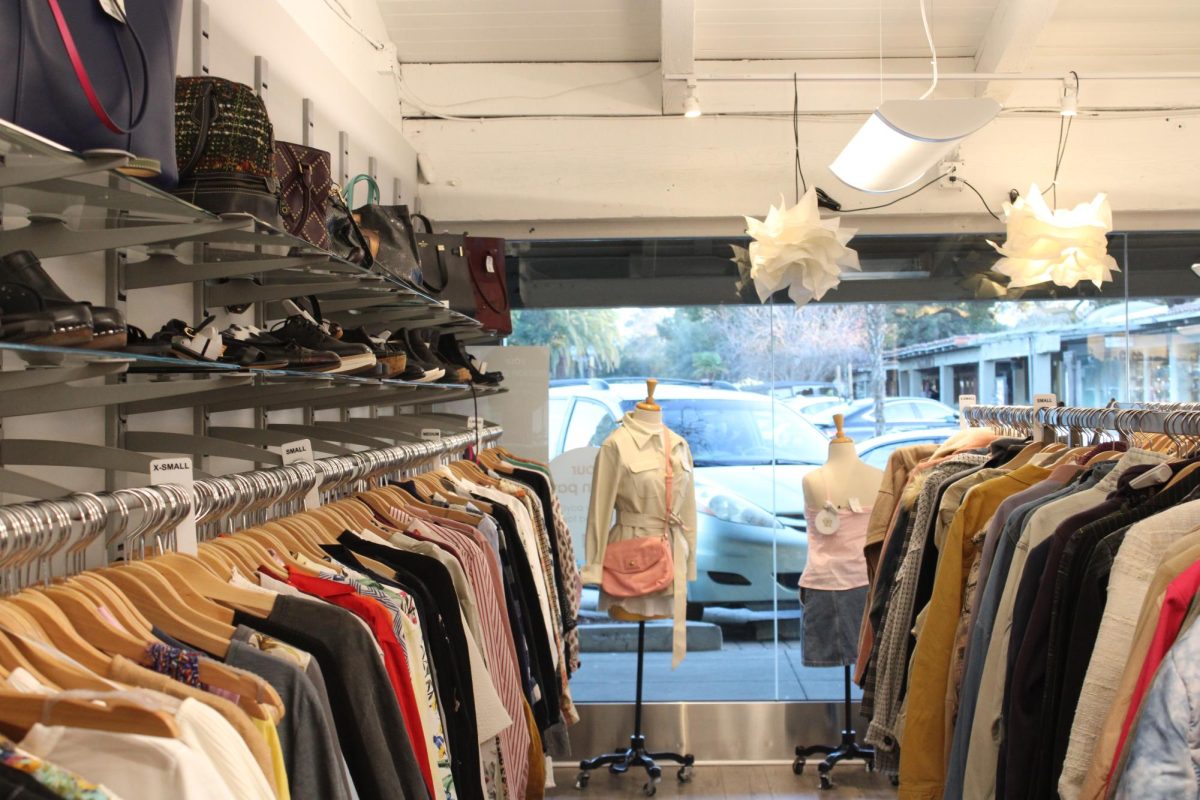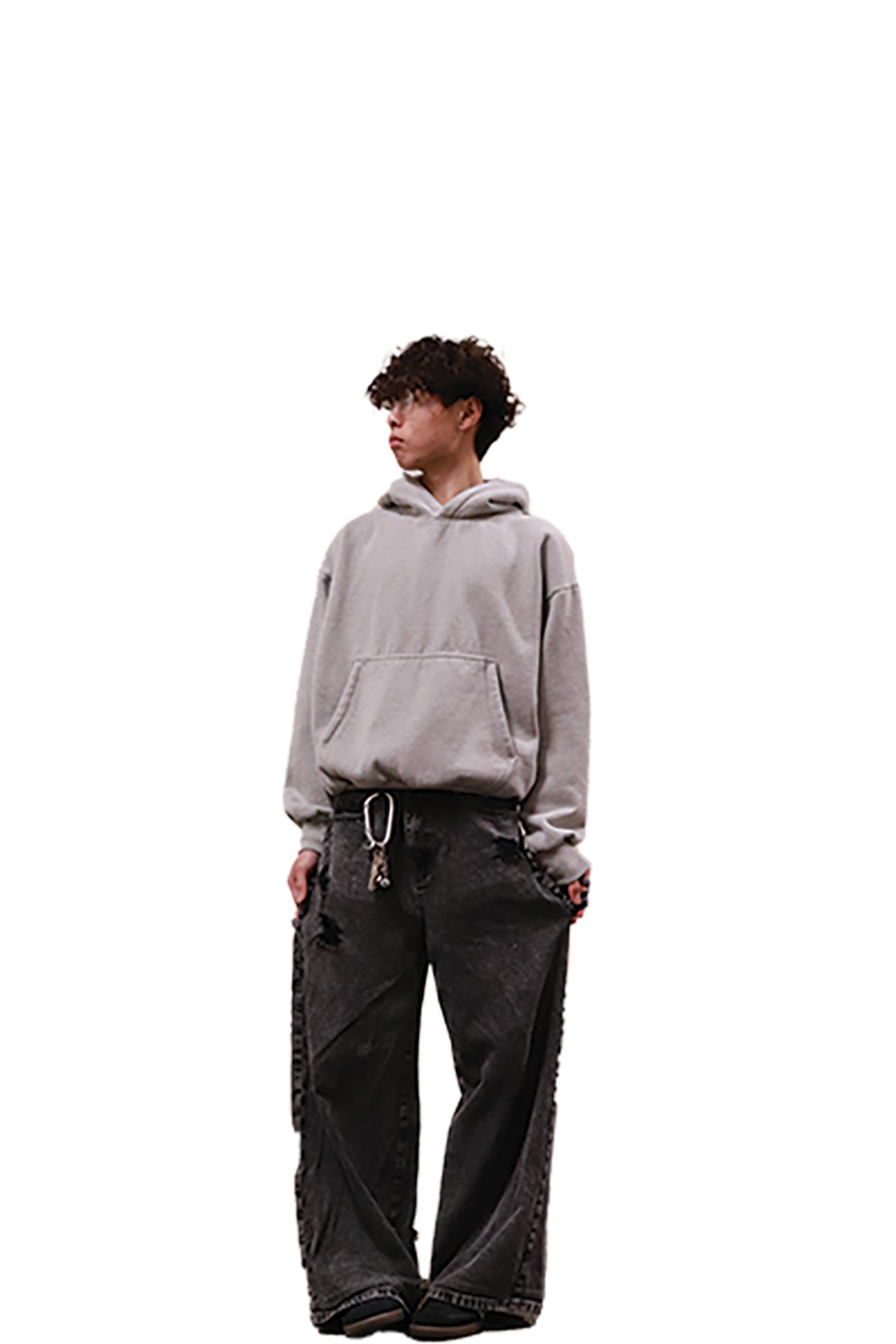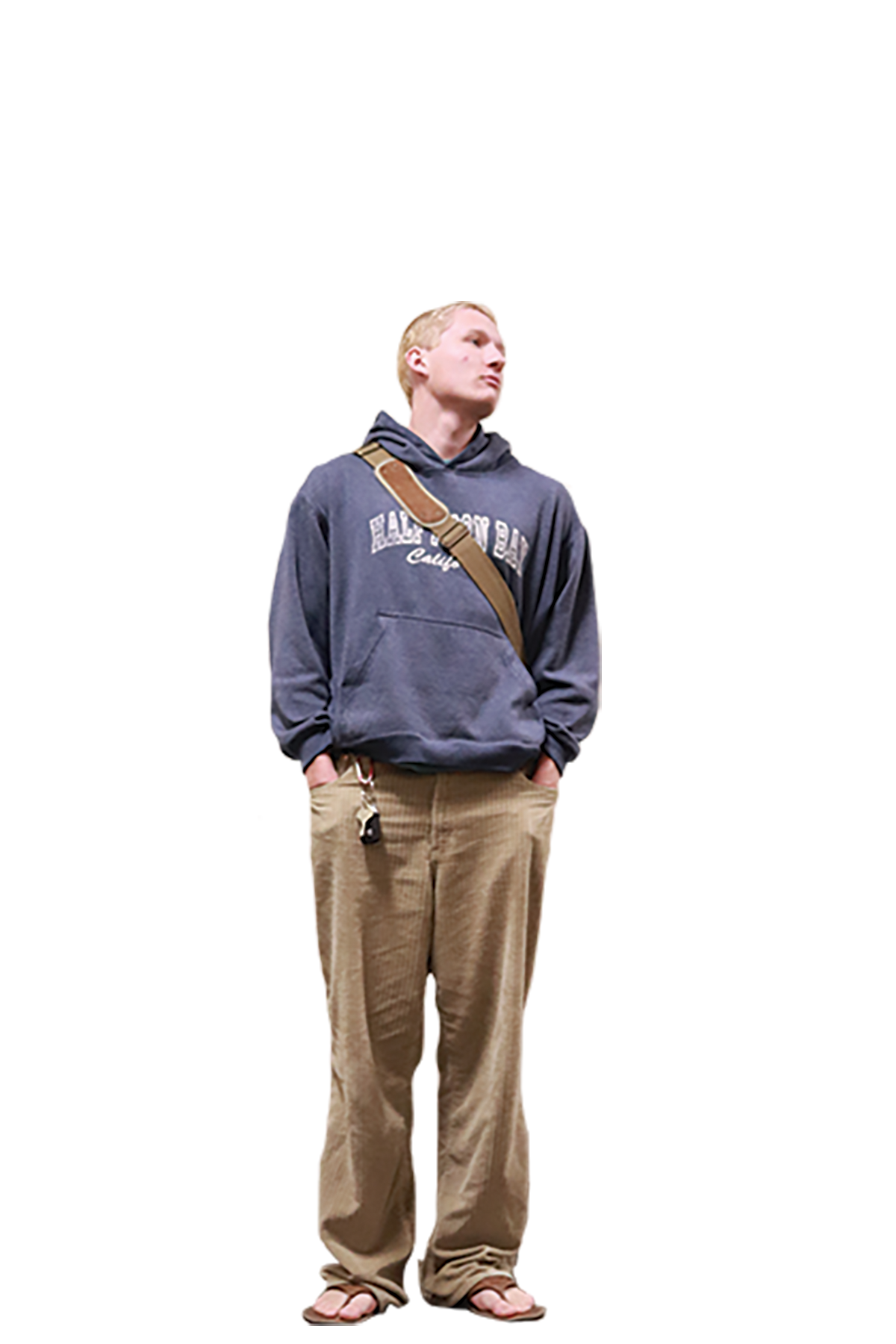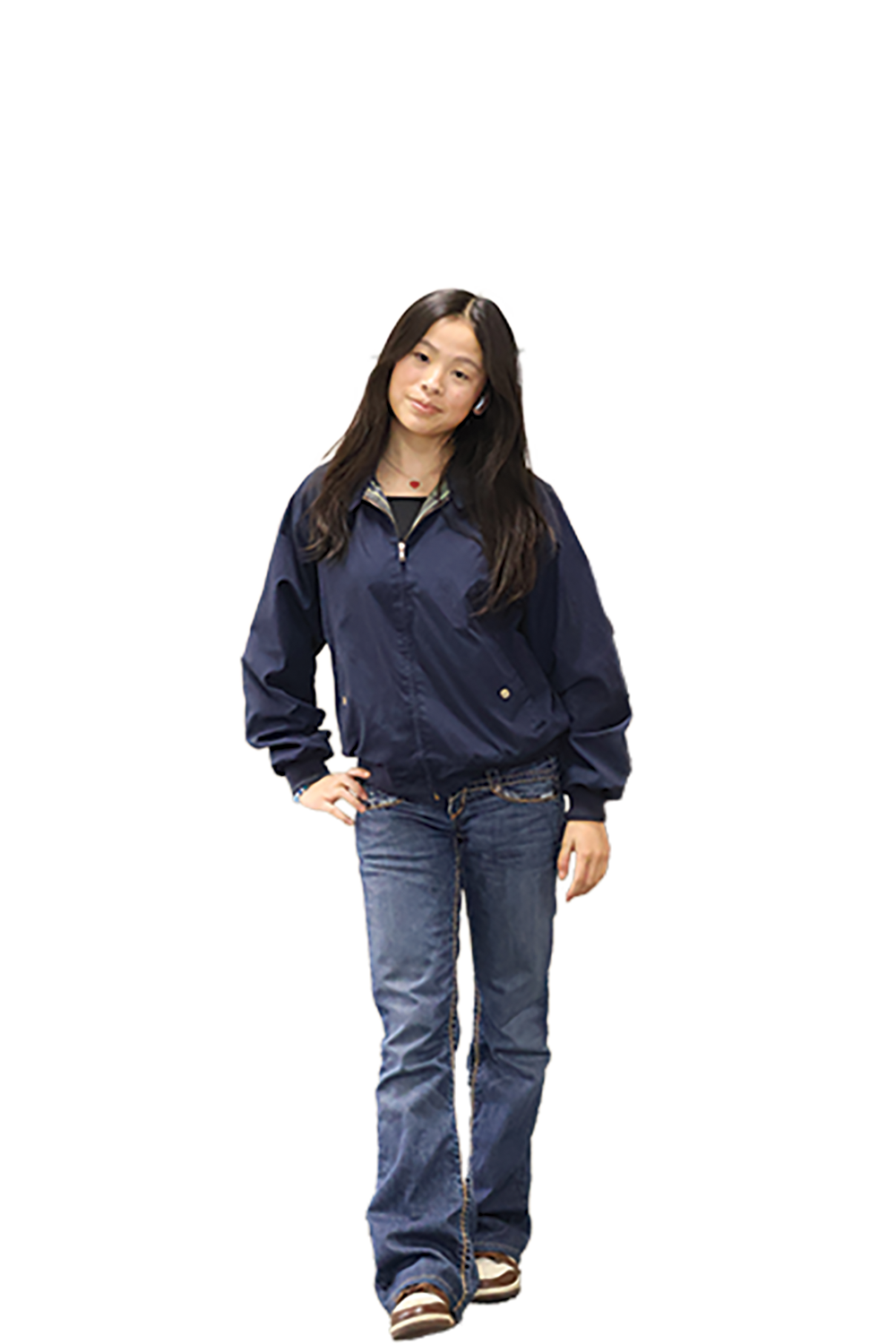As Palo Alto residents walk around downtown, they may find themselves looking through the glass walls of Blue Bin Vintage into racks of assorted clothes that are scattered on double-layered clothing racks. Sweaters and jeans line up walls, organized by their respective sizes and colors on either side. Miles away in Los Altos is the Discovery Shop, a cozy and quiet secondhand store welcomes customers through the doors. Contrasting to stores like H&M, Urban Outfitters and other stores that rely on fast fashion, businesses like these second-hand stores are an uprising method to increase ethical consumption.
Paly AP Macroeconomics and Economics teacher Eric Bloom ties part of environmental harm caused by the fashion industry to the consequences of fast fashion.
“Fast fashion refers to the rapid production of clothing and is criticized for its negative environmental and ethical impacts, including waste generation, poor working conditions and exploitation of natural resources,” Bloom said.
The negative effects of fast fashion are created by the capitalism-feeding frenzy. Bloom believes that ethical considerations are often neglected in the realm of capitalism.
“The problem is that capitalism, driven by profit motives, inherently prioritizes economic growth and shareholder returns over ethical considerations,” Bloom said. “These two forces hinder ‘true competition’ and allow some [economic growth and shareholder returns] to pass off risk to the community.”
Grant Blackburn, another Paly AP Macroeconomics and Economics teacher, observes that the rising popularity of using fast fashion to manufacture inexpensive clothing is due to its ability to create affordable products.
“If you’re in the lower part of the income strata, cheap things matter because [your] budget doesn’t stretch that far,” Blackburn said. “I think for people who make a lot more money, they have the ability to make their choices, the ability to make choices for better environmental outcomes, better ethical outcomes, all of those kinds of things beyond just the economic part.”
Many reasons add to the popularity of unethical clothing production, such as competition between companies. Aditya Sundaram, a freshman at the London School of Economics, believes that many brands have rational views on ethical consumption, specifically businesses with a lower economic status who disregard ethical considerations.
“A large portion of consumers will be incentivized to consume unethically produced items [due to the low prices],” Sundaram said. “Producers who use ethical methods will charge a premium and will be aiming their product towards richer consumers, so it would probably be less accessible.”
Alongside the lower accessibility for purchasing clothes with exclusive materials, social media plays a crucial role in the prevalence of fast fashion in today’s market. Paly junior Aria Shah is one of many who has fallen victim to microtrends that are amplified on social media apps.
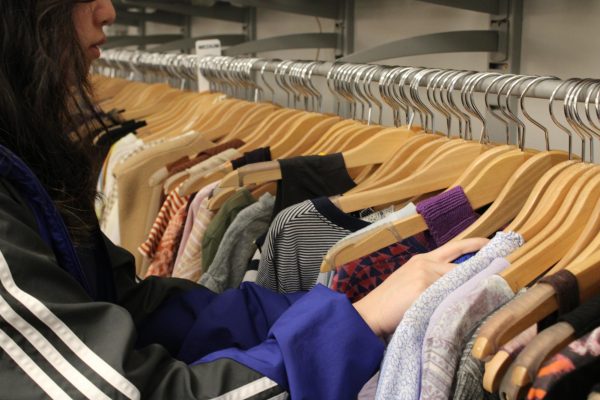
“I think there’s a lot of pressure in buying new things because a lot of people are influenced by famous people or influencers on social media,” Shah said. “Social media is creating a sense of urgency to keep up with the latest fashion, and also endorsing influencers who get sponsored by fast fashion brands.”
Thirfting enables participation in the latest trends, while being beneficial to the environment as well. Lily Williams, a Paly sophomore and avid thrifter, recalls how thrifting can serve as a way to reuse clothes that would otherwise be thrown away.
“You’re buying clothes that have already been put out there,” Williams said. “So you can participate in trend cycles, which normally create lots of waste, without putting more waste out into the world.”
On the business side of thrift stores, Austin Eng, a sales associate at Blue Bin Vintage, has noticed social media portraying thrifting in a positive light, encouraging more people to thrift.
“I do think that media can be a great way of promoting eco-friendly and ethical consumption in clothing because a lot of people post about thrifting and shopping at local flea markets to support not only small businesses, but also help the environment through that [thrifting] as well,” Eng said.
The rise of thrifting is not solely attributed to social media influence. The increased promotion of ethical consumerism and the widespread disapproval of fast fashion has shined a spotlight on thrifting.
“Ethical consumerism encourages consumers to be mindful of the social and environmental consequences of their purchases and to support businesses that adhere to ethical standards,” Bloom said.
Many people are beginning to pressure clothing companies to adopt more ethical clothing production methods, which has resulted in several businesses misinforming the public to increase sales.
“As consumer demand for ethical products grows, businesses may respond by incorporating ethical practices to remain competitive,” Blackburn said. “We have to be mindful of ‘greenwashing’, where companies present a show of ethical practices without genuine commitment. This makes it harder for consumers to make ethical choices.”
More and more Paly students are getting involved with sustainability, and spreading awareness on how to avoid greenwashing. Sophomores Chloe Huang and Christina Gu run Paly’s first sustainable fashion club that allows students to discuss and intertwine sustainability and fashion.
“I feel like a lot of people want to get into thrifting or want to shop sustainably, but don’t know how to,” Huang said. “We just wanted to create a community of people that could share their favorite thrift stores and create a safe community where we can inspire each other to shop sustainably and to care for the planet through sustainable fashion.”
Among the community of thrifters at Paly, sophomore Elsa Lagerblad states that thrifting is an effective method of being conscious of the environment.
“When you go thrifting you’re not contributing to more clothes being made, and you’re preventing waste from other clothes being thrown away,” Lagerblad said. “So you’re stopping waste and pollution on two ends of the cycle.”
Many Paly students make active efforts to ensure the cruelty-free nature of their clothing, staying aware of what their clothes are made of after buying them.
“You can look at the composition of the materials used,” Williams said. “If it’s a lot of acrylic, I wouldn’t [buy it] unless it’s a design I want. Second-hand wool is good, and you can get things with second-hand leather which is good because it lasts a while, and then you’re not worried thinking, ‘Am I killing a cow?’”
Junior Kaliope Hendershot, a retail worker at the American Cancer Society Discovery Shop in Los Altos, frequently buys from the Discovery Shop to avoid fast fashion practices.
“At the Discovery Shop, because I help source the stuff… I know where it’s coming from,” Hendershot said. “I know that all this stuff is donated, that it’s eco-friendly.”
Even as a business, thrift companies will try their best to reduce as much waste as possible.
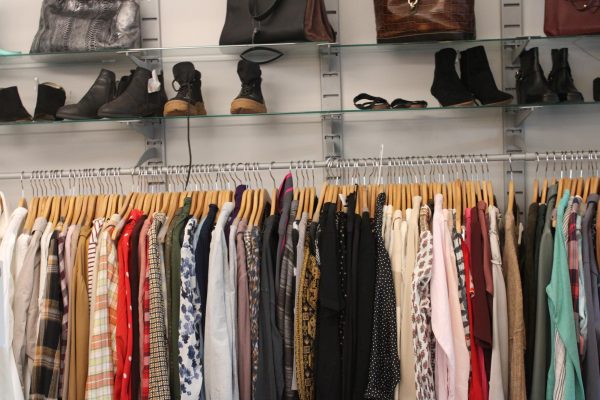
“With unsold clothing items, we send them to an organization called Hope for the Homeless, so a lot of this stuff gets recycled,” Hendershot said. “In fact, a lot of the fabrics that didn’t get used, that were donated, are used to wrap gifts so that people could buy pre-packaged gifts at the Discovery Shop for Christmas.”
Many innovative ways to address fast fashion issues have been developed, including Save Your Wardrobe, an app that provides users’ digital wardrobe and alteration, cleaning, repair, upcycling and customization services. Hasna Kourda, the CEO and co-founder of Save Your Wardrobe, created the digital platform to advance circular fashion.
“I was born and grew up in Tunisia and back then management of resources was quite circular at a large scale,” Kourda said. “My grandmother taught me different skill sets when it came to fashion, to understand fibers, to understand how to repair things, and she was very involved in supporting the local craft. The idea was to bring back those values to these habits and power them with technology to make sure that our generation would have easy access to these traditions and initiatives.”
Save Your Wardrobe has various features to educate the user about the sustainability ratings of clothing and what ethical conditions it is associated with.
“We did a partnership with Good on You that would highlight the impact of the brand’s rating, how sustainable they are, whether it’s for animal welfare, working conditions, and the environmental impact,” Kourda said.
The multiple functionalities of Save Your Wardrobe have been shown to heighten awareness among people regarding fashion brands and purchases.
“One feature asked whether they [users] felt guilty and were justifying the reasoning behind owning a certain type of brands, or thought it [Save Your Wardrobe] was actually an eye-opener,” Kourda said. “People were able to look into the brands in a different way and see alternatives to other brands that we’re offering the same style, or positioned in the same pricing, but we’re more sustainable. So, it’s actually very interesting as well the type of knowledge that can empower the consumer in changing their habits.”
Pursuing ethical decisions when purchasing clothes has its limitations. Kourda emphasizes that maintaining one’s clothing pieces with the intention of long wear takes priority over purchasing from ethical sources.
“It’s not a matter of purchasing more sustainable things,” Kourda said. “But it’s more about whatever you purchase, you have to care for it and give it as long a life cycle as possible and make sure that you repair and care for it.”
As the world’s fashion industry and economy constantly shifts, preserving and maintaining environmental health greatly influences what all aspects of the future will look like.
“It’s all about active choices,” Eng said. “Choosing to adapt your life to be more eco-friendly is one step closer to contributing to a more sustainable society.”


